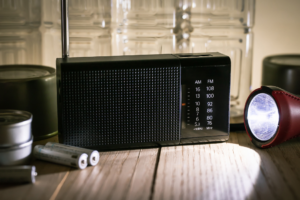 Severe weather continues to damage homes and properties nationwide. Unfortunately, a natural hazard can strike at any time. By planning ahead you and your family can stay safe and limit property damage. Don’t wait until the forecast calls for severe weather because you may not have enough time to prepare.
Severe weather continues to damage homes and properties nationwide. Unfortunately, a natural hazard can strike at any time. By planning ahead you and your family can stay safe and limit property damage. Don’t wait until the forecast calls for severe weather because you may not have enough time to prepare.
Each September, the U.S. Federal Emergency Management Agency (FEMA) recognizes National Preparedness Month to encourage and remind Americans to be prepared for disasters or emergencies in their homes, businesses, and communities. Here are several tips to help you and your family plan for emergencies.
- Know the Type of Risk in Your Community. Most regions of the country face specific types of hazards. It is essential to learn what hazards will likely impact your home and how to assess them if you are away. Many states and localities have implemented emergency alert systems to notify residents should dangerous weather start approaching their area. Visit ready.gov/alerts to learn more about the types of notifications available.
- Review Your Homeowners Insurance Policy. Check your insurance policies to ensure your property is covered for losses incurred as a result of a natural disaster or brutal storm. Damage caused by flooding, earthquakes and hurricanes is generally not covered by your regular homeowner’s policy but can be purchased separately.
- Create a Family Emergency Plan. When harsh weather hits, you should have a plan to stay connected with your family or loved ones. gov recommends putting a communication plan together with your family to know how to contact one another and reconnect if separated. It’s important to choose a family meeting place that is familiar and easy to find. This can be a safe location where everyone can gather and be accounted for in the event of an emergency.
- Pre-Pack a Disaster Supplies Kit. A disaster supplies kit is a collection of basic items your household may need in the event of an emergency. An emergency supply kit will help you and your family with natural disasters. You may lose power or need to evacuate your area, so it is vital to have essential items on hand. Your kit should contain basic items such as water, food, a flashlight, a first aid kit, and a whistle to signal for help. Consider what unique items you may need for your family, such as medical devices or documents. For additional ideas on creating an emergency supply kit, visit ready.gov.
Taking these steps can help keep you and your family safe. National Preparedness Month is a time to ensure  you prepare for the unexpected. You can read more at ready.gov/september. For more disaster resiliency tips for you and your home, contact your local home builders association HERE.
you prepare for the unexpected. You can read more at ready.gov/september. For more disaster resiliency tips for you and your home, contact your local home builders association HERE.